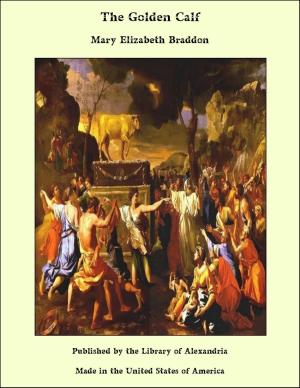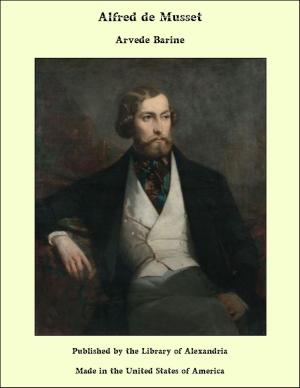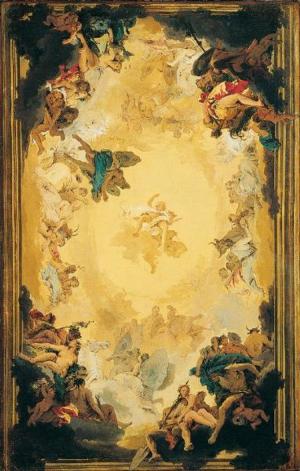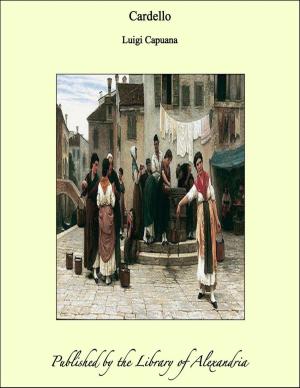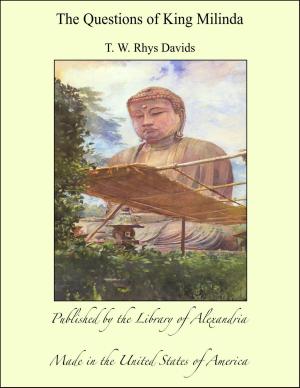Legends of The Kaw: The Folk-Lore of the Indians of the Kansas River Valley
Nonfiction, Religion & Spirituality, New Age, History, Fiction & Literature| Author: | Carrie De Voe | ISBN: | 9781613108536 |
| Publisher: | Library of Alexandria | Publication: | March 8, 2015 |
| Imprint: | Language: | English |
| Author: | Carrie De Voe |
| ISBN: | 9781613108536 |
| Publisher: | Library of Alexandria |
| Publication: | March 8, 2015 |
| Imprint: | |
| Language: | English |
A legend, according to Webster, is any story, be it truth or fiction, which dates back to early days. In this connection, it may be of interest to the reader to know that the stories of adventure in this volume are founded upon real events; but, wherever it has seemed best, names have been changed. In committing to paper the histories of Maune´, the Chippewa girl, and Henry Rogers, there has been practically no deviation from the facts as related by their descendants. The incidents described in the last story were narrated by the daughter of an Indian agent, who lived many years with the Shawnees. The writer has spent a portion of her life in the West, and having been located for a number of years in an old mission town, has witnessed the bean dance, the corn dance and the war dance. Her small strength has been exerted, more than once, to assist in beating back the edges of a great fire, which threatened to creep over the narrow strip of plowed ground outside the fences enclosing a prairie home. Reliable information has been obtained through conversation with old settlers and their families. An army officer, whose long life in the Indian country renders his statements of great value, detailed many facts concerning the Sioux. Interviews with the natives and their descendants have brought out strange traditions and superstitions. The works of Henry R. Schoolcraft—regarding the habits, customs and languages of the aborigines,—the writings of George Bird Grinnell and Daniel G. Brinton have proved exceedingly helpful. Although statistics show, within the last few years, an apparent increase of the Indian population of the United States, comparatively few included therein, are of purely Indian extraction. The red race, as a separate people, is fading from the earth; and there will come a time when the mythology of America will be almost as eagerly studied as that of Greece and Rome. The general public has an erroneous idea of the Indian of the present time. He has passed through the first period—that of wildness and barbaric splendor,—and, emerging from the second epoch—the state of drunken semi-civilization,—has entered upon a career of greater mental activity. With the exception of a few strong inherited tendencies, he now differs but little from his paler-faced brother. The prevailing notion concerning the natives has been formed from the worst class—the idle, uncleanly beggars. It is unjust to judge a whole people by the most degraded specimens. Through intermarriage, the remnants of the aborigines are rapidly becoming a part of the white race and engrafting upon it, not only their peculiarities of temperament but also their strength and determination.
A legend, according to Webster, is any story, be it truth or fiction, which dates back to early days. In this connection, it may be of interest to the reader to know that the stories of adventure in this volume are founded upon real events; but, wherever it has seemed best, names have been changed. In committing to paper the histories of Maune´, the Chippewa girl, and Henry Rogers, there has been practically no deviation from the facts as related by their descendants. The incidents described in the last story were narrated by the daughter of an Indian agent, who lived many years with the Shawnees. The writer has spent a portion of her life in the West, and having been located for a number of years in an old mission town, has witnessed the bean dance, the corn dance and the war dance. Her small strength has been exerted, more than once, to assist in beating back the edges of a great fire, which threatened to creep over the narrow strip of plowed ground outside the fences enclosing a prairie home. Reliable information has been obtained through conversation with old settlers and their families. An army officer, whose long life in the Indian country renders his statements of great value, detailed many facts concerning the Sioux. Interviews with the natives and their descendants have brought out strange traditions and superstitions. The works of Henry R. Schoolcraft—regarding the habits, customs and languages of the aborigines,—the writings of George Bird Grinnell and Daniel G. Brinton have proved exceedingly helpful. Although statistics show, within the last few years, an apparent increase of the Indian population of the United States, comparatively few included therein, are of purely Indian extraction. The red race, as a separate people, is fading from the earth; and there will come a time when the mythology of America will be almost as eagerly studied as that of Greece and Rome. The general public has an erroneous idea of the Indian of the present time. He has passed through the first period—that of wildness and barbaric splendor,—and, emerging from the second epoch—the state of drunken semi-civilization,—has entered upon a career of greater mental activity. With the exception of a few strong inherited tendencies, he now differs but little from his paler-faced brother. The prevailing notion concerning the natives has been formed from the worst class—the idle, uncleanly beggars. It is unjust to judge a whole people by the most degraded specimens. Through intermarriage, the remnants of the aborigines are rapidly becoming a part of the white race and engrafting upon it, not only their peculiarities of temperament but also their strength and determination.





